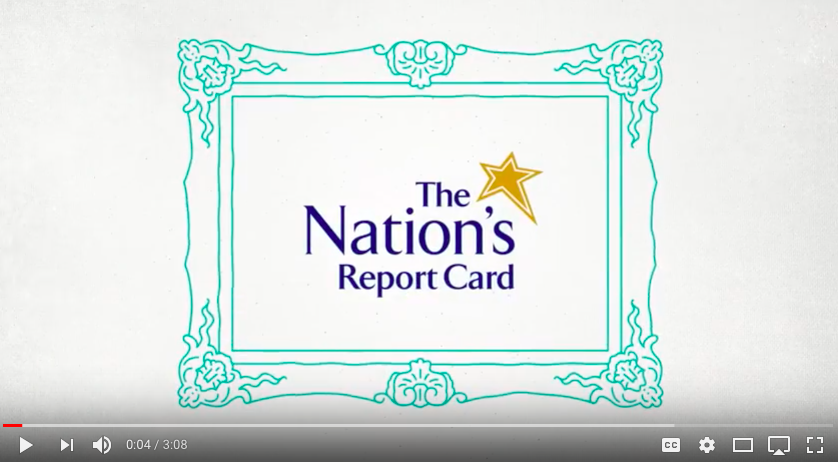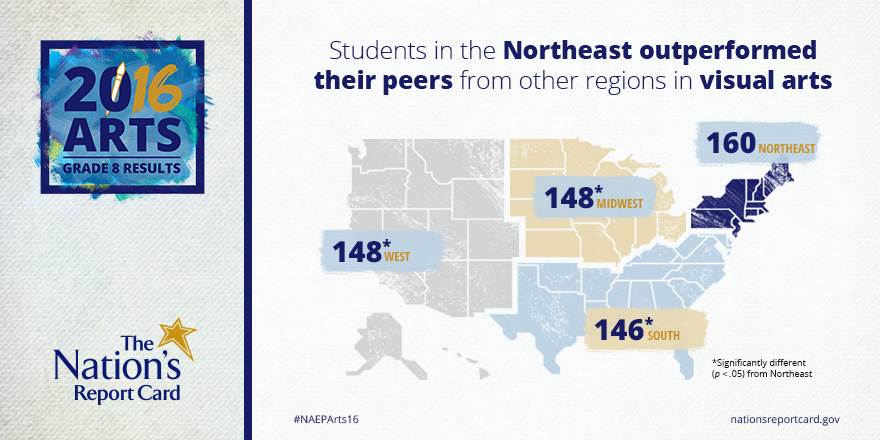Three Key Findings from the 2016 Arts Report Card
With its Arts assessment, NAEP takes on the task of measuring a subject that is thought to be difficult to assess. But with the help of practicing artists, arts educators, and arts organizations, as well as some of the country's most accomplished assessment experts, NAEP has developed an assessment of students' abilities to observe, describe, analyze, evaluate, and create works of visual art and music. NAEP is the only assessment that measures arts on a national level. Prior to 2016, the NAEP arts assessment was last administered in 2008.
The assessment was given to nearly 8,800 eighth-graders across the nation in the spring of 2016, regardless of whether the students were taking visual arts or music courses at the time. Results of the 2016 NAEP Arts Report card were released on April 25, 2017. In addition to answering questions about their knowledge and skills in the arts, participants also responded to surveys about their interests and experiences in the arts. School administrators were surveyed on their arts offerings and resources.
In music, student performance was based on questions that asked them to analyze the elements and structure of music, compare and contrast various musical styles, and make judgements about technical and expressive qualities of musical performances and compositions—such as the question shown in the video below where students are played Rhapsody in Blue and asked to identify the musical instrument playing the piece.

In visual arts, student performance was measured on their ability to observe, describe, analyze, and evaluate works of art, and their ability to express ideas and feelings in the form of original works of art. As shown in the video below, one item asked students to draw a self-portrait.
While we saw no overall performance change in music and visual arts achievement since the last arts assessment in 2008 or overall change in participation in music and visual arts course taking, there were interesting variations across the nation regionally and among student groups. Also, there were changes over time in participation in visual arts and music activities outside of school.
Here are three key findings:
Participation in the arts outside of school is on the decline in some activities.

In 2016, 13 percent of eighth-graders reported taking visual arts classes outside of school. That’s a decline from the 16 percent of students in 2008. Similarly, in music, 35 percent of students played a musical instrument outside of school in 2016, but 38 percent did so in 2008. In-school participation held steady between 2008 and 2016. Forty-two percent of eighth-graders reported taking a visual arts class, and 63 percent reported taking a music class in 2016, which were comparable to the percentages in 2008.
Arts scores and participation are the highest in the Northeast.

In visual arts, the Northeast region, with an average score of 160, outperformed the Midwest (148), West (148), and South (146). In-school access and opportunities vary by region. In one example, 68 percent of eighth-grade students in the Northeast reported that they were taking or took an art course in 2016. Meanwhile, 47 percent of students in the Midwest reported doing the same. As for music, there were no significant average score differences between the Northeast, Midwest, and South regions.
Racial/ethnic gaps between White and other student groups are changing.

Hispanic students made gains in music since 2008, and the score gaps between White and Hispanic students narrowed in both music and visual arts (from 32 to 23 points in music in 2016, and 26 to 19 points in visual arts). In 2016, higher percentages of Hispanic students reported engagement in in-school music activities than in 2008, such as taking a music class (60 percent compared to 50 percent in 2008) and playing in school band (15 percent compared to eight percent in 2008). Meanwhile, Asian/Pacific Islander students had a higher average score in visual arts than their White peers for the first time (166 points compared to 158 points). They too reported higher engagement with out-of-school arts activities than Whites, such as taking private lessons on a musical instrument or in singing outside of school (31 percent compared to 15 percent).
The 2016 Arts Report Card contains several other interesting findings, data tools, and sample questions to assess yourself. Explore the results
Share This Post:

